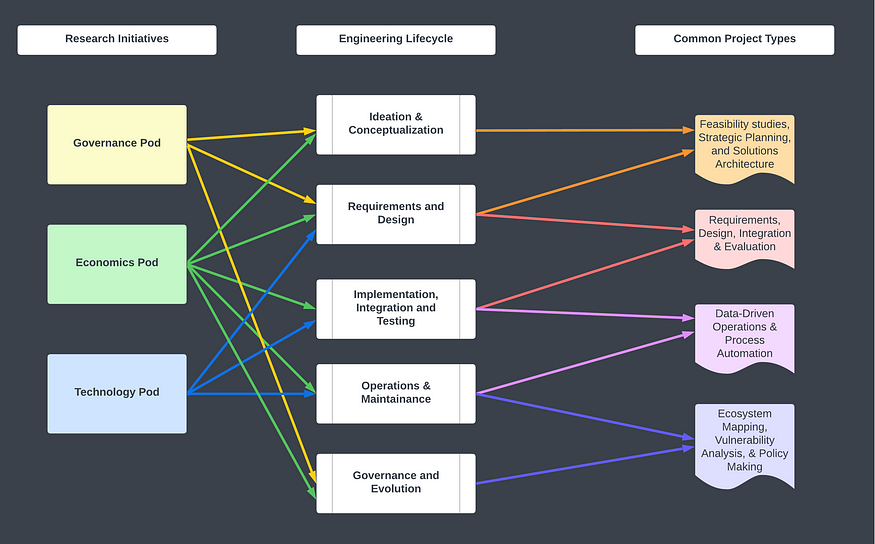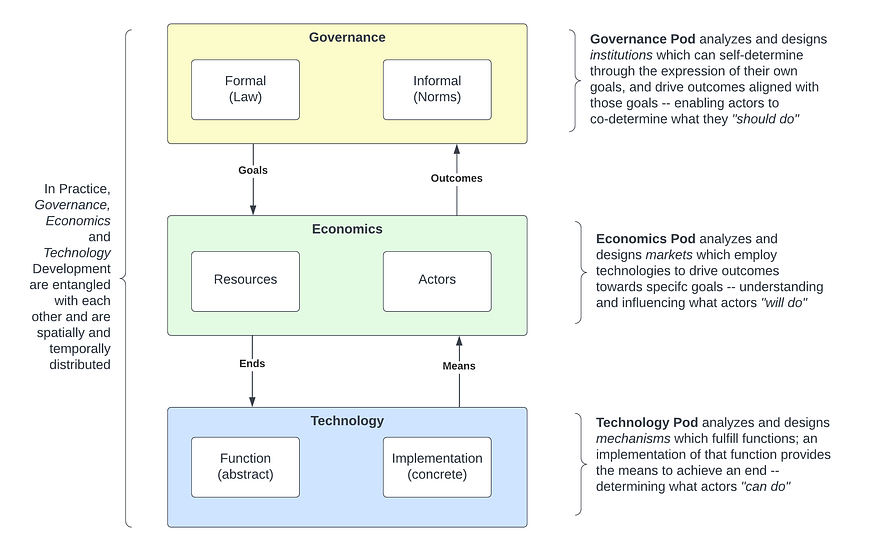On the Role of Models in Governance, Economics and Technology
In general, scientists make models to improve our understanding of how things work, while engineers typically employ models to expand our understanding of how we can work with things. These distinct (but complementary) functions require different kinds of models, with differing resemblances to the thing being modeled. Model-based systems engineering (MBSE) consists of developing ways of modeling and/or specific models of complex systems, deploying these tools in ways that deepen our understanding of the system in question, and operationalizing the insights that result in order to improve the system’s ability to pursue its purpose.
A model is always an abstraction of the thing being modeled, which means that it represents the thing being modeled by selectively identifying a subset of the set “everything about that thing” as salient to the question at hand, and excluding everything that does not belong to this subset from its representation; saying that “all models are abstractions” is therefore another way of saying that “all models are wrong, but some are useful.” The fact that no model can ever be perfect, however, means that the art of modeling can always be improved. Our research agenda thus represents our best ideas about how to systematically advance the “state of the art” of MBSE through an ongoing interrogation of modeling, in theory and in practice.

Because the choice of what to include in one’s model (and what to abstract away) is ultimately and inescapably subjective, advancing the state of these arts does not mean getting closer and closer to “absolute truth.” Rather, it means enhancing and refining our ability to fit our models (and our procedures for making models) to the specific contexts in which they are being used, extending our ability to maintain a model’s fitness to purpose over time, and sharpening our understanding of the limits of what models can do.
Our organization’s animating purpose is to narrow the gap between the “bleeding edge” of technological advancement, which is perpetually in motion, and the set of technologies that we understand well enough to responsibly and reliably employ in a setting that impacts the public. The only way to narrow this gap is to engineer a situation in which our understanding of the landscape grows more rapidly than the rate at which that landscape is itself evolving — and the rigorous feedback loop between theoretical investigation and practical application at the heart of research is the best mechanism for ensuring that we can learn about how our world is changing before the ground falls out from under us.
Good research, after all, can be neither wholly practical nor wholly theoretical; rather, it requires theories that are both derived from and put to the test by practice, and practices that are both informed by and generative of theoretical insight. Picking up a previous thread, one might identify this feedback loop as the nexus where science and engineering cross paths: Science pursuant to engineering inquires into “how things work” in order to advance our understanding of “how to work with those things;” engineering informed by science “works with things” in ways that both depend on and enrich our understanding of “how those things work.”
The foundation of BlockScience rests on the precise point where these two lines of inquiry intersect. Our internal research and development is what puts the “science” in BlockScience, expanding our understanding of “how things work”; our work with clients leverages this understanding to improve our knowledge of “how to work with things,” in our capacity as engineers. What sets our firm apart is that we view these two functions as interdependent, inseparable, and integral — for research to be ethical and effective, we believe that it must involve both.
Our work is concerned with complex (socio-technical) assemblages, but the parts of these assemblages that are susceptible to engineering typically belong to (at least) one of three categories: Mechanisms, Markets, and Institutions. We have thus divided our internal research program into three “Pods” — Technology, Economics, and Governance — that correspond to the three major modes of intervention for systems that interact with (that is, both regulate and are regulated by) their environment. The Technology Pod’s research focuses on regulation through material constraints (what is actually possible, given the materials one is working with), the Economics Pod examines regulation through incentives (broadly construed to include any information process that may influence resource allocation decisions), and the Governance Pod’s work centers on regulation by way of rules (both formal and informal, “laws” and “norms”).
In reality, these three modes of regulation cannot be disentangled, but examining each separately before putting these separate investigations into conversation with one another is one way that we can improve our understanding of the nature, modes, and consequences of their entanglement. Ultimately, each Pod’s research cuts across all three categories, although the Technology Pod’s investigations primarily take place at the narrow spatio-temporal scale of mechanisms, the Economics Pod’s at the intermediate spatio-temporal scale of markets, and the Governance Pod’s at the broad spatio-temporal scale of institutions.
Mechanisms — however simple or complex they might be — define “what can be done,” while markets provide structures and incentives in order to better understand (and influence) “what will be done” (at least in expectation) by actors under some simplifying assumptions; institutions, meanwhile, are broader patterns in human behavior which engage with (but are not limited to) questions concerning “what should be done.” Assertions that something “should” happen are ultimately normative but nonetheless have a bearing on what mechanisms are created, and how markets are structured — so despite the insistence of many technologists and economists, neither mechanism design nor market design is an objective discipline.

The existing academic discourses around technology, economics, and governance have become highly specialized, with each having its own idioms and jargon — but in practice, the relationships between the notions “can do”, “will do”, and “should do” are critically entwined. Therefore, we view the three Pods as having parallel conversations in three different languages, with each Pod open to any member of our team who is (or wants to become) fluent in the language it speaks, in order to capture the expertise that is specific to each domain in the broader conversation about how they all interact in complex systems.
As the three “Pods” approach common questions from distinct (but overlapping) vantages, they function as a multi-sensor array pointed directly at topics central to the design, operation, and evolution of complex and dynamical socio-technical systems. Although each Pod is a distinct entity within our firm, nearly everybody on our team belongs to more than one of the three, and we constitute project teams to deliberately ensure that the specific expertise developed by each Pod is part of the conversation shaping every project that we undertake. The Pods also regularly interact, on the individual and the group level, as they pursue their common goal: To better understand the mechanisms and markets that shape (and are shaped by) institutions.
All models are wrong, but this fact does not make models any less necessary for the work of design, development, operations, maintenance, and governance — and when one has no choice but to build using imperfect tools, it becomes all the more imperative to understand the causes and consequences of their imperfections. Our research shows that we appreciate the power and variety of models, but also that we acknowledge their limitations; we treat models with the respect that a tool deserves, rather than the reverence that dogma demands.
At the end of the day, the usefulness of any tool depends on the skillfulness of the hands that use it. Our firm’s knowledge of systems engineering, coupled with our deep domain expertise, allows us to offer our clients — and the public — complex systems modeling that is conscientiously fit to its specific context, and that never loses sight of the people, purpose, and environment that it is meant to serve.
Article by Michael Zargham and Ilan Ben-Meir, with editing and publication by Jessica Zartler.
About BlockScience
BlockScience® is a complex systems engineering, R&D, and analytics firm. By integrating ethnography, applied mathematics, and computational science, we analyze and design safe and resilient socio-technical systems. With deep expertise in Market Design, Distributed Systems, and AI, we provide engineering, design, and analytics services to a wide range of clients including for-profit, non-profit, academic, and government organizations.


